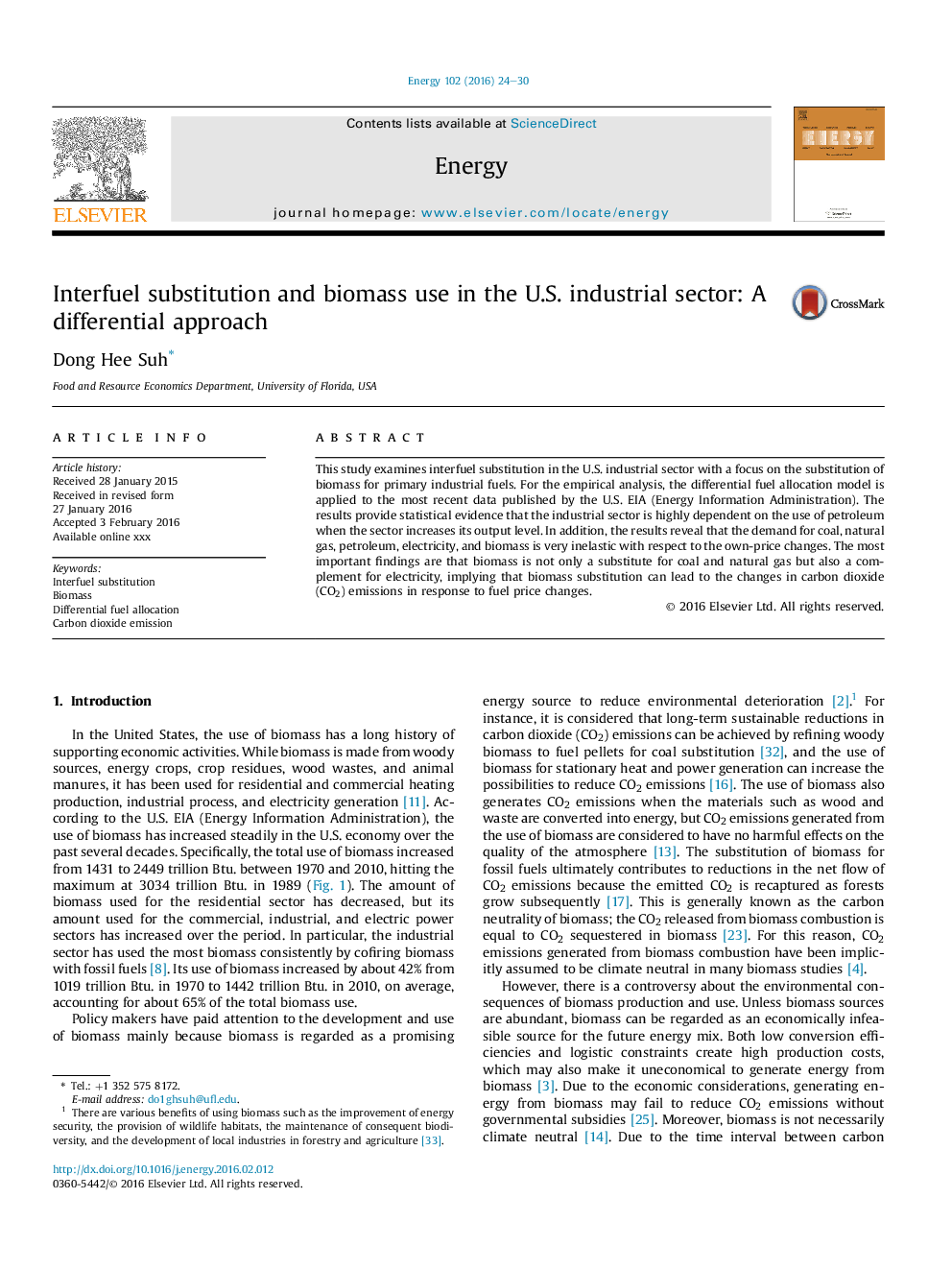| Article ID | Journal | Published Year | Pages | File Type |
|---|---|---|---|---|
| 8073960 | Energy | 2016 | 7 Pages |
Abstract
This study examines interfuel substitution in the U.S. industrial sector with a focus on the substitution of biomass for primary industrial fuels. For the empirical analysis, the differential fuel allocation model is applied to the most recent data published by the U.S. EIA (Energy Information Administration). The results provide statistical evidence that the industrial sector is highly dependent on the use of petroleum when the sector increases its output level. In addition, the results reveal that the demand for coal, natural gas, petroleum, electricity, and biomass is very inelastic with respect to the own-price changes. The most important findings are that biomass is not only a substitute for coal and natural gas but also a complement for electricity, implying that biomass substitution can lead to the changes in carbon dioxide (CO2) emissions in response to fuel price changes.
Related Topics
Physical Sciences and Engineering
Energy
Energy (General)
Authors
Dong Hee Suh,
